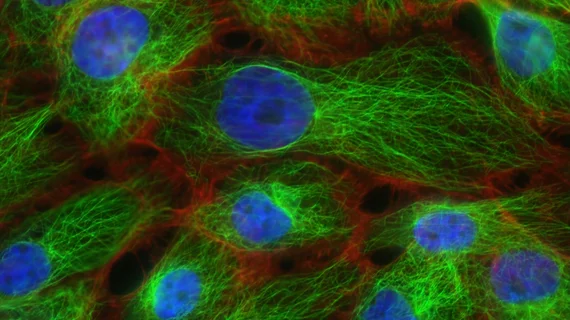Radiological AI revisited from the consumer’s-eye view: ‘People need to stop calling pattern recognition artificial intelligence’
By now it’s a difficult-to-dispute likelihood: AI won’t replace doctors making diagnoses, but doctors who use AI will displace doctors who don’t use AI.
The hypothesis gets a fresh airing out from the vantage point of the general public in an article published March 5 in the New York Times.
In search of evidence one way or the other, America’s “newspaper of record” concentrated on mammography and sent a tech reporter to Hungary.
Why Hungary? Because that country has a robust breast-cancer screening culture and is considered one of the largest testing grounds for healthcare AI on real patients, the Times notes.
In fact, five Hungarian hospitals performing more than 35,000 breast screenings a year rolled out AI systems in 2021 and now have data to show the results.
Among the most striking of these is a 13% rise in breast cancer detection in one Hungarian site, found during a study of facilities there and in the U.K. involving more than 275,000 patient cases.
The research further showed breast radiologists reduced their workloads by at least 30% thanks to AI’s weeding out of imaging exams that needed no closer look.
The Times article also notes the success of an AI tool used in five Hungarian that has caught at least 22 breast cancers previously missed by radiologists. Another 40 are currently under review, so the count may be higher.
The Times article, which includes reporting by a U.S. writer based in San Francisco, revisits the years-long debate over AI technology’s true vs. perceived potential to replace radiologists outright.
“For now, those fears appear overblown, with many experts saying the technology will be effective and trusted by patients only if it is used in partnership with trained doctors,” the Times reports.
Of note, the article’s comments section has drawn a lively reader discussion. One theme receiving a thoughtful if testy hashing out: whether breast cancer AI is, in fact, a true form of artificial intelligence—or just a more sophisticated iteration of computer-aided detection, or “CAD,” which had been used in breast radiology for many years before AI became a marketing-ready buzzword.
“People need to stop calling pattern recognition software ‘Artificial Intelligence’ even if it is better at recognizing certain patterns than a trained human,” one reader writes. “But then of course without ‘AI’ in the headline, this story wouldn't be ‘good copy.’”
Read it all here.

